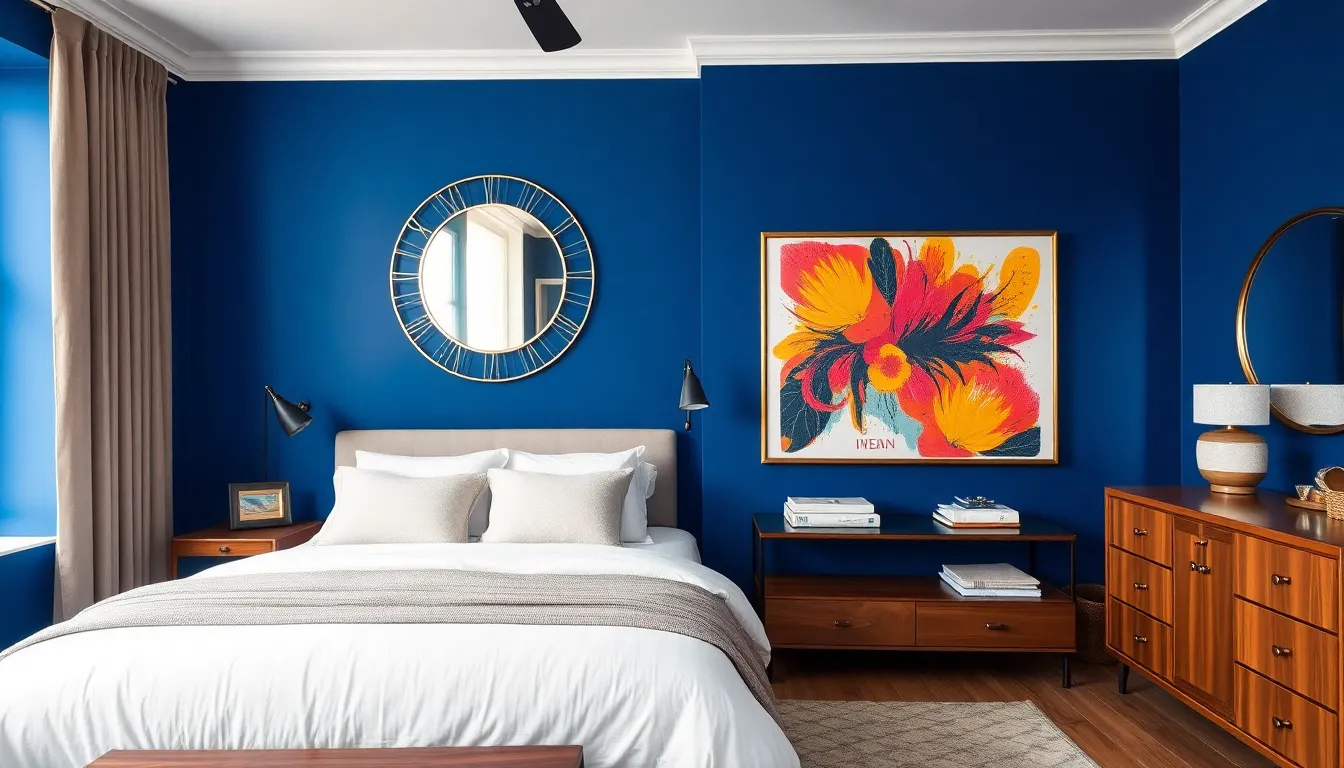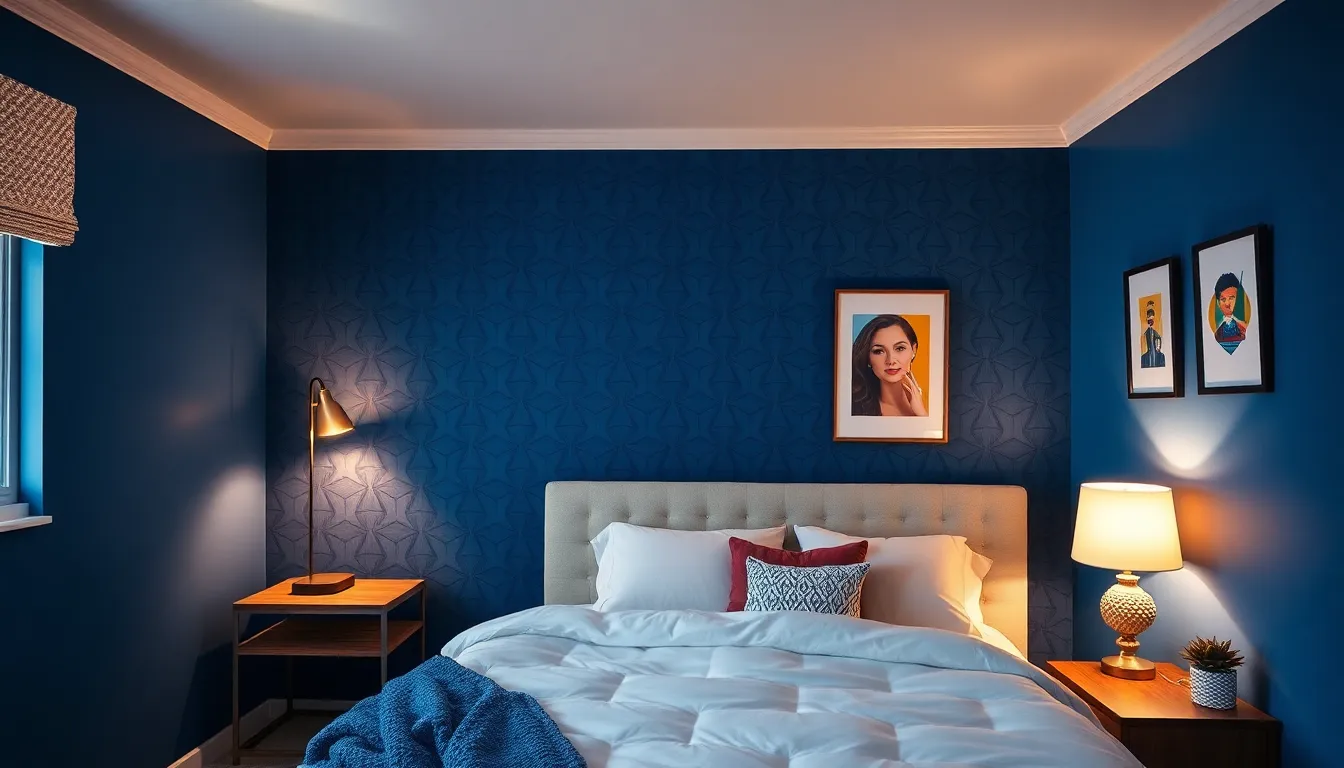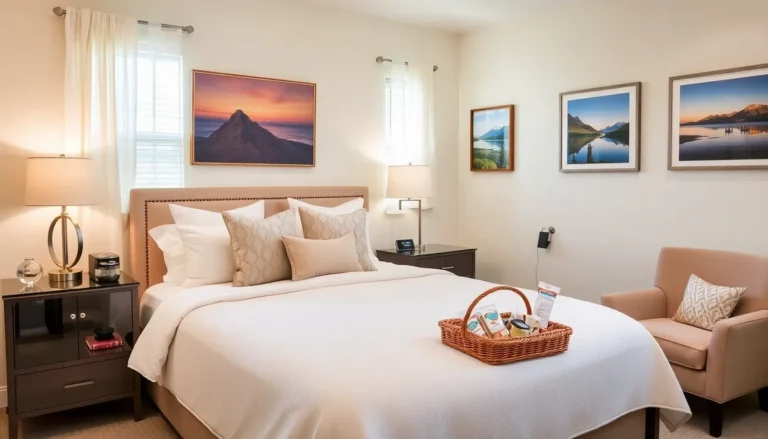Table of Contents
ToggleTransforming a bedroom into a personal sanctuary is easier than you think, and an accent wall might just be the secret weapon you need. Imagine stepping into a space that reflects your style, with one wall boldly declaring, “I’m fabulous!” It’s like giving your room a personality makeover without the drama of a full renovation.
Overview of Bedrooms With Accent Walls
An accent wall serves as a focal point, drawing attention and elevating the overall room aesthetic. Various colors and textures contribute to the unique character of the space. Bold shades, like deep blue or rich green, evoke a sense of calm and sophistication.
Patterns, such as geometric designs or floral motifs, can transform a bedroom’s ambiance. Materials like wood paneling or brick create a warm, rustic feel. Accent walls don’t require extensive renovations, allowing for simple yet effective updates.
Lighting plays a crucial role in highlighting the accent wall. Wall sconces or strategically placed lamps can enhance its visual impact. Since accent walls vary in style, they cater to diverse tastes, from modern minimalist to classic cozy.
Choosing the right wall for an accent can make a significant difference. Common choices include the wall behind the bed or a feature wall that draws the eye. With thoughtful placement, the accent wall adds depth and dimension to the space.
Incorporating artwork or decor on the accent wall enhances the personal touch. Framed prints or shelves can showcase individual style. Flexibility in design allows for seasonal updates, keeping the bedroom fresh and inviting.
Creating a cohesive look involves pairing the accent wall with complementary furnishings. Coordinating bedding, rugs, and curtains ensures harmony within the room. With numerous possibilities, accent walls offer a simple yet impactful way to elevate bedroom designs.
Benefits of Accent Walls

Accent walls enhance a bedroom’s appeal in several ways. These walls act as a visual anchor, providing depth and drawing the eye toward focal points within the space.
Visual Interest and Focal Points
Accent walls add visual interest by incorporating color, texture, or patterns. Colors like deep blue create calming effects while vibrant hues energize the ambiance. Unique textures, such as wood paneling or matte finishes, bring a tactile element that captures attention. Patterns, whether geometric or floral, can dramatically shift the room’s dynamics. This combination of features establishes a distinct focal point, leading the viewer’s gaze toward the wall and, by extension, enhancing the overall design.
Enhanced Design Flexibility
Accent walls provide design flexibility, allowing for easy updates as trends change. Choices range from bold colors to delicate wallpapers, adapting to personal styles without a complete overhaul. One wall can reflect seasonal changes, keeping the space fresh and exciting with minimal effort. Pairing an accent wall with various decor elements, such as artwork or mirrors, enhances versatility. This adaptability makes it simple to keep a bedroom looking modern, ensuring the environment remains inviting.
Popular Styles for Accent Walls
Accent walls provide numerous styling options that can transform any bedroom. A well-chosen design choice can enhance the room’s visual appeal.
Color Choices and Combinations
Bold colors often bring life to an accent wall. Deep blues and rich greens create a calming atmosphere, while vibrant reds and yellows energize the space. Combining two or more complementary colors can achieve a striking effect. For instance, pairing navy blue with gold accents introduces a sophisticated vibe. Soft pastels like blush or mint add a delicate, inviting touch. It’s essential to consider the existing furnishings when selecting hues to ensure a cohesive look. Overall, choosing the right colors can significantly influence the mood of the room.
Material Options
Different materials offer unique character to an accent wall. Wood paneling introduces warmth and texture, making it suitable for a cozy, rustic feel. Brick or stone can provide an industrial charm, enhancing the room’s overall depth. Wallpaper with patterns or textures gives a playful twist while allowing for easy updates. Fabrics such as tapestry or canvas can soften the environment, adding a touch of elegance. Choosing materials based on the desired style can profoundly impact how the space is experienced. Each option allows for creativity, ensuring that the accent wall remains a focal point in the design.
How to Choose the Right Accent Wall
Choosing the right accent wall enhances the bedroom’s overall aesthetic and functionality. Consider personal style and room dynamics when making selections.
Size and Proportion Considerations
Size and proportion play a vital role in accent wall selection. A large wall can effectively showcase bold colors or intricate patterns, while smaller spaces may benefit from soft shades or subtle textures. Selecting the wall behind the bed often establishes a primary focus, ensuring it commands attention. Keeping proportions in mind helps maintain balance in the overall room layout. If the room features a low ceiling, lighter colors may create an illusion of height. Decor elements should complement, not overwhelm, the space.
Lighting and Room Functionality
Lighting and room functionality significantly impact accent wall effectiveness. Natural light exposure can change how colors appear throughout the day, so testing samples in different lighting helps in decision-making. Use ambient lighting to create warmth, while accent fixtures, such as sconces or pendant lights, can highlight textures. Consider room functions as well; for instance, a calming wall color works well in bedrooms meant for relaxation. Thoughtful lighting choices can enhance the chosen accent wall, ensuring it remains an inviting focal point. Adapting the lighting scheme to fit seasonal changes keeps the bedroom feeling fresh and dynamic.
Tips for Creating Your Own Accent Wall
Creating an accent wall involves making deliberate choices that reflect personal style. The process can be approached in various ways, depending on the desired outcome.
DIY vs. Professional Installation
Choosing between DIY and professional installation depends on skill level and comfort. Many opt for DIY projects to save money and enjoy hands-on creativity. Home improvement stores offer a variety of resources, including tutorials and workshops, to assist in this process. For those unsure about their abilities, hiring a professional guarantees a polished result. Cost considerations often play a significant role, as professional services can vary widely. It’s essential to weigh the benefits of expertise against the satisfaction of completing a project independently.
Maintenance and Care
Maintaining an accent wall ensures its beauty lasts. Regular cleaning helps prevent dust accumulation, keeping colors vibrant. Using a damp cloth with mild detergent works well for most surfaces. For textured materials, like wood panels, utilizing a vacuum attachment can help remove dirt from crevices. Touch-ups on paint or wallpaper can restore appearance, especially in high-traffic areas. Additionally, consider the impact of sunlight; UV rays can fade colors over time. Applying protective coatings can enhance durability while preserving the wall’s aesthetic appeal. Prioritizing care leads to long-lasting enjoyment of the accent wall.
Accent walls offer a dynamic way to personalize bedroom spaces while enhancing their aesthetic appeal. By choosing the right colors and materials, anyone can create a striking focal point that reflects their unique style. The versatility of accent walls allows for easy updates and seasonal changes, ensuring the bedroom remains fresh and inviting.
Incorporating thoughtful lighting and complementary furnishings further elevates the overall design. With careful consideration of personal preferences and room dynamics, accent walls can transform a simple bedroom into a stylish sanctuary that provides both comfort and visual interest. Embracing this design element is a step toward creating a space that truly feels like home.








